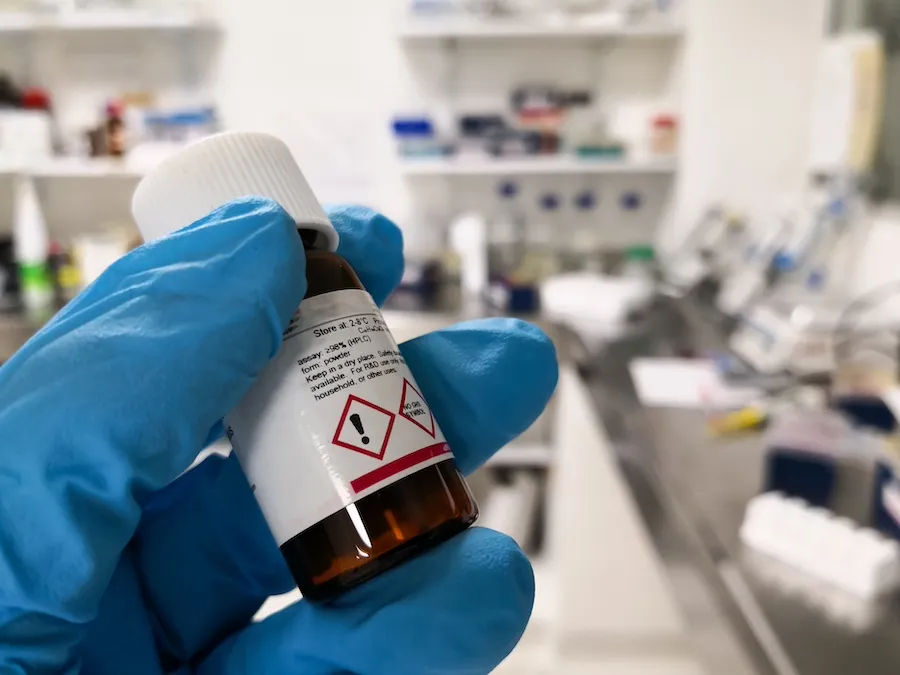
The hazards of silanamine
The European Commission has asked the RAC (Committee for Risk Assessment) of ECHA to review its opinion on silanamine (Silanamine, 1,1,1-trimethyl-N-(trimethylsilyl), hydrolysis products with silica), an amorphous synthetic silica (SAS) surface-treated with HMDS (hexamethyldisiloxane), EC number 272-697-1, CAS number: 68909-20-6.
Indeed, an opinion has been issued in 2019, on the hazards of silanamine. According to this opinion, silanamine had to be classified according to the CLP regulation n°1272/2008 (Classification, Labelling, Packaging), for its acute toxicity of category 2, by inhalation and its specific toxicity for certain target organs at repeated doses (STOT RE 2) for the lungs.
Since then, debates have arisen as to how low soluble, low toxicity (LSLT) type substances should be classified for inhalation hazards. For example, in June 2022, studies were conducted by industry on rats to further analyze the inhalation hazard.
The results of these studies show that the rats do not die because of intoxication but rather by a clumping effect due to the low density of the powder aerosols, blocking their nasal cavities.
The RAC is therefore tasked with analyzing the additional data provided by industry to assess whether the acute classification is justified. The RAC's time to finalize its analysis ends in June 2023.
The impact on your obligations
If a substance or mixture is classified as hazardous, according to the CLP Regulation, the marketer has to provide information on the hazards of the substance or mixture. The information is shared in the form of a label and packaging in accordance with the provisions of Titles II and IV of the CLP Regulation.
In addition, if the substances are subject to REACH, they will have to be notified to ECHA through the C&L inventory.
Finally, substances must contain an SDS (Safety Data Sheet) in accordance with the classification of the substance, providing information on the hazards according to CLP: pictograms, warning and hazard statements, precautionary statements, hazard class, etc.
In the case of silanamine, the change of classification could lead to new obligations for PPE (Personal Protective Equipment).
The use of silanamine
Silanamine is used in many areas such as the manufacture of sealants, flow agents and reinforcing agents in coatings, rheology control, adhesives, silicone elastomers and rubber products. It is also found as an inert ingredient in non-food pesticides.
Silanamine is found in the following industries:
- Filling (filler in silicone elastomers and as a component of anti-foaming formulations in the manufacture of food packaging materials)
- Flame retardants
- Pigments
- Process regulators
- Processing aids
Other regulations
Currently, silanamine is covered by the Biocidal Products Regulation (BPR, Regulation (EU) No. 528/2012) for the following use:
- TP18 insecticides (eCA = France, approval date from 01/11/2018 to 31/10/2028), mainly used in chicken farms or egg producing farms.
Silanamine is known on the EEA (European Economic Area) market as a nanomaterial. And a REACH pre-registration has been done in 2009 (n°CAS 68909-20-6).
In addition, it is included in the inventories:
- EINECS : European Inventory of Existing Commercial chemical Substances
- ELINCS : European List of Notified Chemical Substances
- NLP : No-Longer Polymers
Support of EcoMundo
EcoMundo offers to its customers the creation, the update, the translation or the global management of SDS (and eSDS) according to REACH/CLP/GHS. We also provide multilingual and multinational management according to the different levels of GHS requirements implemented in the countries.
Create 5 free SDSs with SDS1Click, or use the SDS Factory software solution to create, manage, translate and distribute SDSs for your hazardous substances.
With EcoMundo, you benefit from a specialized support at each step of the life cycle of your biocidal products. Combining personalized services and consortium, EcoMundo supports you for your regulatory compliance (PA, active substance dossier, transitional measures, risk assessments, etc.).
The hazards of silanamine
The European Commission has asked the RAC (Committee for Risk Assessment) of ECHA to review its opinion on silanamine (Silanamine, 1,1,1-trimethyl-N-(trimethylsilyl), hydrolysis products with silica), an amorphous synthetic silica (SAS) surface-treated with HMDS (hexamethyldisiloxane), EC number 272-697-1, CAS number: 68909-20-6.
Indeed, an opinion has been issued in 2019, on the hazards of silanamine. According to this opinion, silanamine had to be classified according to the CLP regulation n°1272/2008 (Classification, Labelling, Packaging), for its acute toxicity of category 2, by inhalation and its specific toxicity for certain target organs at repeated doses (STOT RE 2) for the lungs.
Since then, debates have arisen as to how low soluble, low toxicity (LSLT) type substances should be classified for inhalation hazards. For example, in June 2022, studies were conducted by industry on rats to further analyze the inhalation hazard.
The results of these studies show that the rats do not die because of intoxication but rather by a clumping effect due to the low density of the powder aerosols, blocking their nasal cavities.
The RAC is therefore tasked with analyzing the additional data provided by industry to assess whether the acute classification is justified. The RAC's time to finalize its analysis ends in June 2023.
The impact on your obligations
If a substance or mixture is classified as hazardous, according to the CLP Regulation, the marketer has to provide information on the hazards of the substance or mixture. The information is shared in the form of a label and packaging in accordance with the provisions of Titles II and IV of the CLP Regulation.
In addition, if the substances are subject to REACH, they will have to be notified to ECHA through the C&L inventory.
Finally, substances must contain an SDS (Safety Data Sheet) in accordance with the classification of the substance, providing information on the hazards according to CLP: pictograms, warning and hazard statements, precautionary statements, hazard class, etc.
In the case of silanamine, the change of classification could lead to new obligations for PPE (Personal Protective Equipment).
The use of silanamine
Silanamine is used in many areas such as the manufacture of sealants, flow agents and reinforcing agents in coatings, rheology control, adhesives, silicone elastomers and rubber products. It is also found as an inert ingredient in non-food pesticides.
Silanamine is found in the following industries:
- Filling (filler in silicone elastomers and as a component of anti-foaming formulations in the manufacture of food packaging materials)
- Flame retardants
- Pigments
- Process regulators
- Processing aids
Other regulations
Currently, silanamine is covered by the Biocidal Products Regulation (BPR, Regulation (EU) No. 528/2012) for the following use:
- TP18 insecticides (eCA = France, approval date from 01/11/2018 to 31/10/2028), mainly used in chicken farms or egg producing farms.
Silanamine is known on the EEA (European Economic Area) market as a nanomaterial. And a REACH pre-registration has been done in 2009 (n°CAS 68909-20-6).
In addition, it is included in the inventories:
- EINECS : European Inventory of Existing Commercial chemical Substances
- ELINCS : European List of Notified Chemical Substances
- NLP : No-Longer Polymers
Support of EcoMundo
EcoMundo offers to its customers the creation, the update, the translation or the global management of SDS (and eSDS) according to REACH/CLP/GHS. We also provide multilingual and multinational management according to the different levels of GHS requirements implemented in the countries.
Create 5 free SDSs with SDS1Click, or use the SDS Factory software solution to create, manage, translate and distribute SDSs for your hazardous substances.
With EcoMundo, you benefit from a specialized support at each step of the life cycle of your biocidal products. Combining personalized services and consortium, EcoMundo supports you for your regulatory compliance (PA, active substance dossier, transitional measures, risk assessments, etc.).







